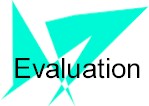





 A website created for families
who want to know more about the assessment process!
A website created for families
who want to know more about the assessment process!
|
|
|
 IEP-Individualized
Education Plan is
the process
and blueprint for the services to be delivered. BRIEF OVERVIEW OF THE IEPAn IEP is an individualized and unique plan that is meant to address the needs of the student. It defines the goals and services provided to meet goals and a method of evaluation of the studentís progress. IEP meetings MUST be held annually, but can be held more often. A parent has the right to request a review or revision AT ANY TIME. Teachers and parents typically will come to meetings with suggestions for a childís goals for the year; however, these goals have to be agreed upon and written consent has to be received before the document becomes binding. MYTHS OF IEPíSa.
IEPís can only be a certain number of pages. b.
Only a
certain number of goals are permitted on the IEP. c.
If a
childís goals work for one child then they will work for other children with
the same disability. d.
IEPís are meant to be completed without parental input and THE IEP
SHOULD INCLUDE:
a.
Services provided.
b.
Setting where services will be provided. c.
The professionals who will be responsible for
implementing
such services. IEPís
must include the following: 1.
A
statement of the childís current level in academic and non-academic areas. 2.
A
statement of annual goals and short-term objectives. 3.
Appropriate
criteria to determine if the child is meeting the short-term objectives and
progressing toward annual goals. 4.
A
description of special education and related services (audiology, counseling,
occupational therapy, etcÖ) to be provided including the extent to which the
child will participate in regular education classrooms.
A date of when the services will begin and how long the services will be
provided should also be stated. 5.
A
description of transitional services should also be provided if your child is 14
years of age or older. GOALS,
OBJECTIVES,
EVALUATION Goals
should be broad while the objectives should be specific. An
example follows: GOAL Jade will increase her nonverbal communication skills. Jade will make eye contact with the person she is speaking with 3 out of 4 times daily. POSSIBLE CONTENT AREAS IN THE IEPThe
content should include academic as well as non-academic goals.
This includes social skills, functional skills (dressing, crossing the
road, etc), and related services (occupational therapy, speech therapy, etc). IF
YOU DISAGREE WITH THE IEP There is an appeal process that is mandated by IDEA-the Individuals with Disabilities Education Act. The local or state education agency must distribute appeal procedures and information. Additionally, each state has a Parent Training Information Center (PTI) which is federally funded and provides assistance as well as advocacy training. AFTER THE IEP IS COMPLETEDCommunication between the parent and professionals and the services provided to the student are essential. The IEP should be a working document flexible to change as the childís needs change. |
|
|
Home | Background|
Pre-K | Elementary | Secondary
| Post-Secondary
|